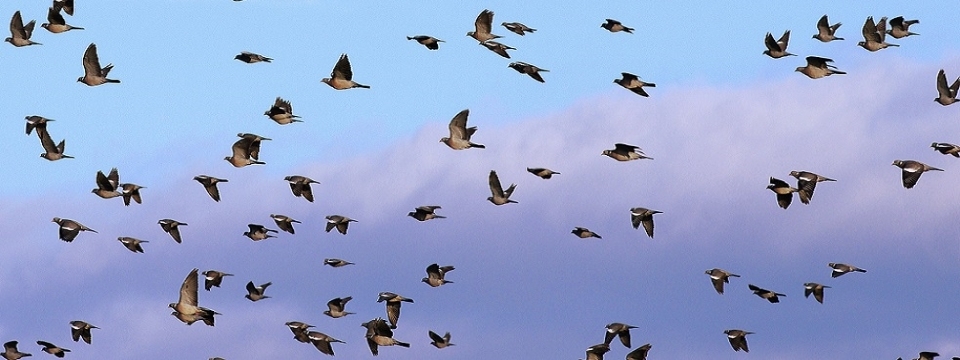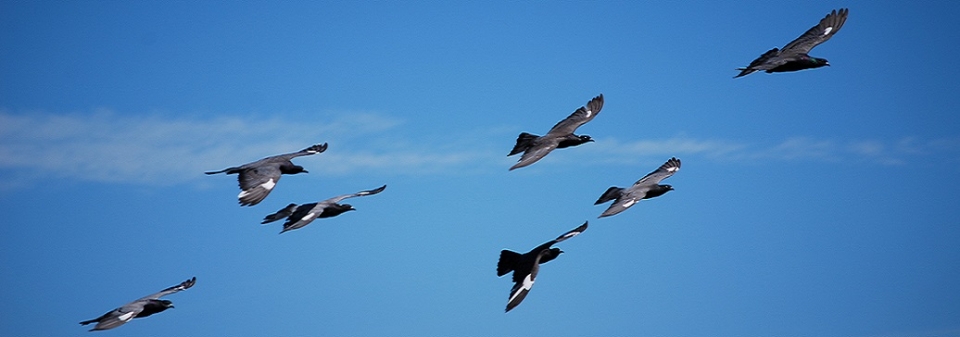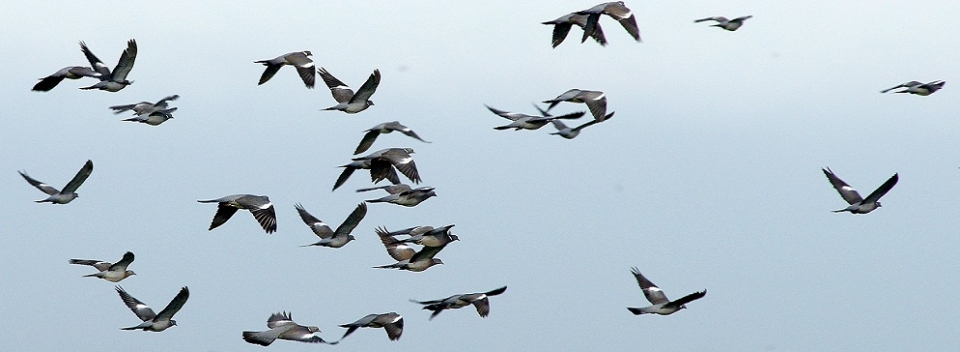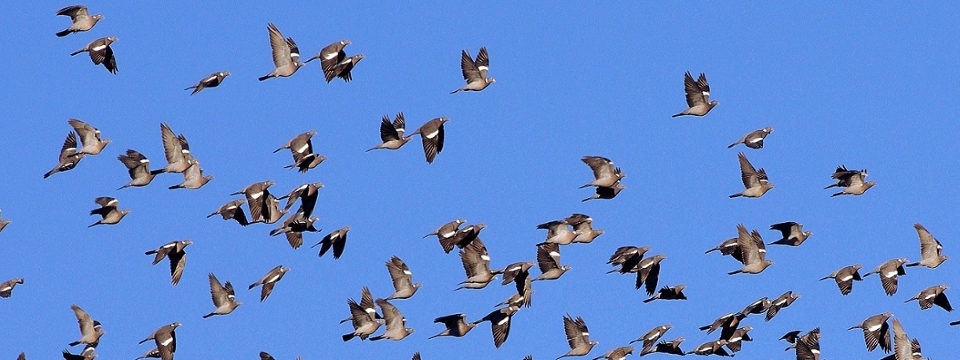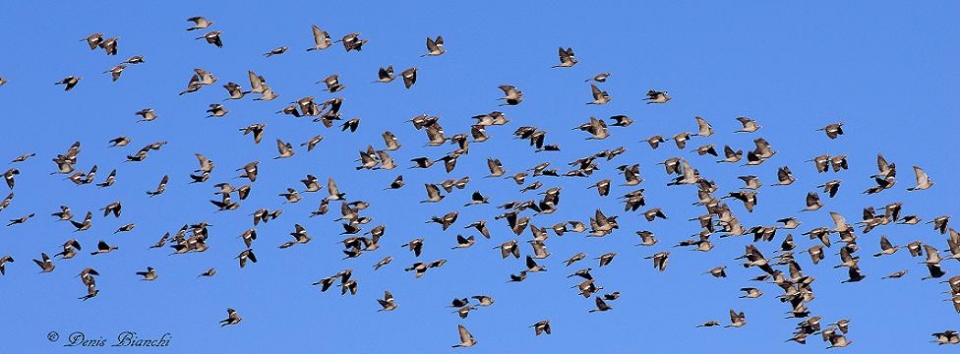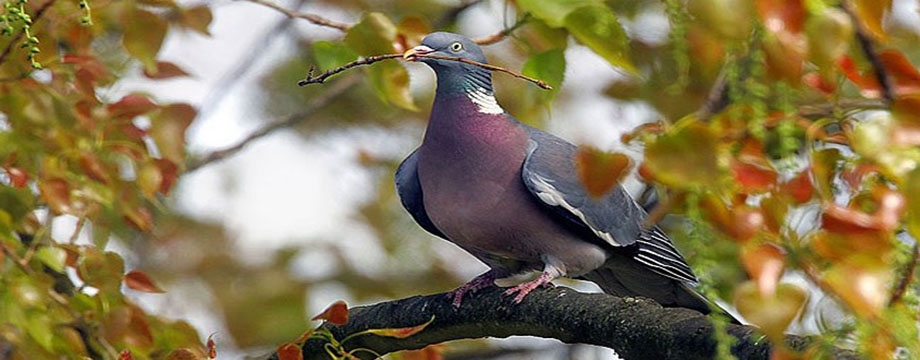Lo studio delle migrazioni non é sempre inteso ad uso venatorio , ma anzi proprio con l’aiuto determinante dei Cacciatori , questo studio permette di approfondire aspetti scientifici che riguardano l’ambiente , la climatologia, l’ecologia , la miglior conoscenza della fisiologia dei migratori , ed anche la conoscenza dei pericoli di trasmissione di malattie virali e parassitarie .
É interessante testimonianza questo Lavoro presentato pochi giorni fa’ al VI Baltic Genetics Congress ( 3 Ottobre 2015) totalmente mirato ad identificare le vie migratorie del Colombaccio in Europa
Identification of population genetic structure and migratory routs of Woodpigeon in Europe and North Africa
D. Butkauskas1, S. Švažas1, A. Sruoga2, A. Bea3, G. Grishanov4
1 Nature Research Centre, Akademijos 2, Vilnius, 08412 Lithuania
2 Vytautas Magnus University, K. Donelaičio 58, Kaunas, 44248 Lithuania
3 Ekos Estudios Ambientales, Donostia Etorbidea, 2 Bajo, 20160 Lasarte, Spain
4 Baltic Federal I. Kant University, Universitetskaya 2, Kaliningrad, 236000 Russia
E-mail: dalius@ekoi.lt
Keywords: Woodpigeon, mtDNA D-loop, microsatellite DNA, population genetic structure
Genetic diversity of the Woodpigeon (Columba palumbus) in breeding, migratory and wintering birds collected in different regions in Europe (Russia, Belarus, Lithuania, Sweden, Hungary, France, Spain, Portugal, Belgium) and North Africa (Marocco) was studied based on D-loop sequencing and microsatellite analysis. Overall 119 different haplotypes ascertained as belonging to 6 haplo-groups were identified after partial D-loop fragments of 535 birds were amplified and sequenced [1]. After screening of 10 microsatellite loci originally constructed for Columbia livia [2],[3] four variable CliμT13, PG1, PG2, PG3 loci were genotyped and analysed. Based on unequal frequency of different haplogroups found in Woodpigeon samples representing different breeding, migratory, wintering or sedentary populations close similarity of distribution patterns between wintering in Iberian Peninsula and breeding in the Baltic Sea region and Belarus woodpigeon populations indicated close phylogenetic relationships between bird samples collected in these regions. The results support observations of ecologists indicating Eastern Atlantic Flyway as the main migratory rout of Woodpigeons in Europe. Microsatellite analysis also support ringing recoveries data indicating that some Woodpigeon populations are presumably sedentary or short distance migrants. On the contrary to the high haplotype diversity characteristic of all studied European populations the only one haplotype and subsequently no genetic variability was found in Morocco population which is supposed consist of Woodpigeons introduced into this North African country as a game birds hundreds years ago. Detection of unique haplotypes attributed to separate haplogroup indicates existence of isolated breeding population distributed in continental part of Southern Russia (Crimea and Sochi region). Special distribution patterns of rare haplotypes found in geographically distant locations indicates different migratory routs of Woodpigeons in Europe.
Acknowledgements
Surveys of Woodpigeons and collection of their samples for genetic analysis was supported by the Hunters Federation of the Basque Country. Special thanks for colleagues in different countries for their contribution in obtaining Woodpigeon samples in different regions of Europe: José María Usarraga, Rafael Cadenas, Paulino Fandos, Jesús Toledo, José María López, Santi Ferrón, Gillermo Crespo, Isidro Lázaro, Paco Parejo & Bartomeu Seguí (Spain), Valérie Cohou (France), Alberto Cavaco (Portugal), Anders Grahn (Sweden), Andras Baldi (Hungary), Alexander Kozulin (Belarus), Alexander Mishchenko (Russia).
References
[1] Butkauskas D., Švažas S., Sruoga A., Bea A.., Grishanov G., Kozulin A., Olano I., Stanevičius V., Tubelytė V., Ragauskas A., 2013, Vet Med Zoot 63 (85), 12-16.
[2] Traxler B., Brem G., Muller M., Achmann R., 2000, Mol Ecol. 9, 365-78.
[3] Lee J.C., Tsai L., Kuan Y., Chien W, Chang K. Wu C., Linacre A., Hsieh H., 2007, Electrophoresis, 28,
4274-81.
Questo lavoro presentato il 3 Ottobre 2015 segue il seguente Lavoro che é stato supportato dalla Associazione Cacciatori dei Paesi Baschi ( Spagna)
Butkauskas, D., Švažas, S., Sruoga, A., Bea, A., Grishanov, G., Astafieva, T., Olano, I., Stanevičius, V., Tubelytė, V. (2013) Genetic techniques for designation of main flyways of Woodpigeon in Europe as a tool for control and prevention of pathogenic diseases. Veterinarija ir zootechnika. 63 (85): 12–16.
A fine stagione , al momento dell’analisi di sintesi dell’attuale Migrazione autunnale del Colombaccio in Italia , ritorneremo sull’argomento .
Al momento ci é sembrato interessante dare comunque comunicazione tempestiva .


